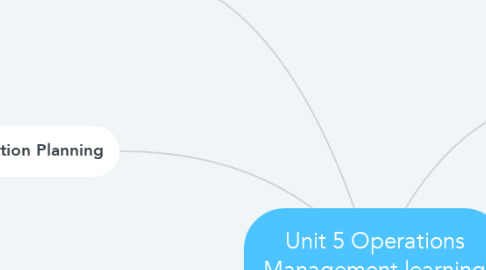Unit 5 Operations Management learning objectives
by Saxon Cowley

1. 5.4 Location
1.1. explain the reasons for a specifc location o production
1.2. Discuss outsourcing, offshoring and re-shoring
2. 5.5 Production Planning
2.1. distinguish between just-in-time (JIT) and just-in-case (JIC)
2.2. calculate a capacity utilization rate
2.3. distinguish between cost to buy (CBT) and cost to make (CTM).
2.4. interpret a stock control chart (especially the bufer stock, reorder level, reorder quantity, and lead time)
3. 5.6 Research and Development
3.1. evaluate the importance of research and development (R&D) for a business
3.2. explain the importance of developing goods and services that address customers unmet needs
3.3. distinguish between adaptive creativity and innovative creativity
3.4. Distinguish between product innovation process innovation, positioning innovation and paradigm innovation
4. 5.7 Crisis Management and Contingency Planning
4.1. distinguish between between crisis management and contingency planning
4.2. Explain transparency, communication, speed, control in effective crisis management
4.3. comment on the advantages and disadvantages of contingency planning
5. Topic 5.1 The role of Operations Management
5.1. define operations and describe their relationship with other business functions
5.2. comment on operations management in organizations producing goods and/or services
5.3. discuss operations management strategies and practices for ecological, social (human resource), and economic sustainability.
6. 5.2 Production Methods
6.1. define and explain the following production methods: job or customized production batch production mass production fow, line, or process production cellular manuacturing
6.2. recommend the most appropriate method of production for a given situation
7. 5.3 Lean production and Quality Management
7.1. Outline the features of less waste and greater efficiency
7.2. explain the features of cradle-to-cradle design and manufacturing
7.3. outline the features of quality control and quality assurance
7.4. examine the impact of lean production and TQM on an organization
7.5. explain the importance of national and international quality standards


